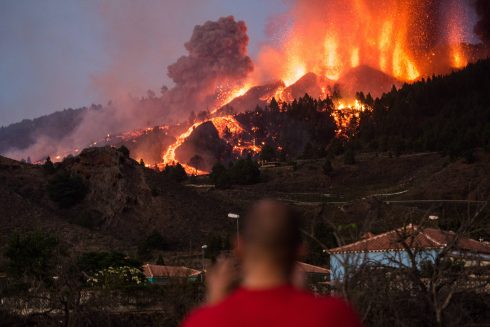A GIANT white milky-coloured blob first spotted on the Mar Menor two years ago is said to have been caused by calcium carbonate according to a scientific study.
Researchers believe it was formed by excessive pH levels caused by illegal discharges from Campo de Cartagena farmers.
The blob measures around 15 square kilometres and can only be spotted from above, and occupies around 10% of the lagoon’s water mass.
READ MORE:
- Scientists investigate ‘whitish mass’ of water in Spain’s Mar Menor lagoon
- Spain coughs up an extra €200m to eliminate pollution from the Mar Menor lagoon

Scientists from the Spanish National Research Council(CSIC) have been looking into it after the blob materialised next to the Rambla del Albujon between Los Alcazares and the Carmoli marina.
The size barely changes, but if there’s a lot of rain or strong winds, then it slightly changes its contour and is diluted a little, before regaining its shape.
Study co-ordinator, Juan Manuel Ruiz, a researcher at the Spanish Institute of Oceanography (IEO), said they started investigating towards the end of 2022 using images from space satellites as well monitoring stations at the lagoon.
Measurements were taken of current velocity, water temperature, salinity, pH, turbidity, dissolved oxygen, nutrients and inorganic carbonates.
They also sampled sediment, plankton and benthic vegetation.
“Satellites confirmed that the white spot started in June 2022, and the phenomenon, which is known as whiting, is associated with episodes of carbonate precipitation,“ Ruiz said.
Carbonates such as calcium carbonate are in chemical equilibrium depending on the pH of the water.
If the pH varies, due to the biological activity of marine organisms, the physicochemical conditions of the water or sedimentation are displaced and precipitate.
The concept of whiting is not unique to the Mar Menor and has been found in lakes around the world..
“Whiting usually lasts for weeks or months, but not for two years which makes the Mar Menor quite exceptional,” said CSIC researcher Gonzalo Barbera.
“We have observed that the pH level of the Mar Menor has been rising non-stop for seven years,” Barbera added.
The white spot and the higher pH levels- say scientists- are related to illegal discharges of nitrates by farmers via the Campo de Cartagena aquifer that surrounds the Mar Menor and is even located below it.
“The mechanism that we attribute to the formation of the white spot is basically the underwater discharge of groundwater,” Barbera concluded.
The scientists argue that underground discharges are compatible with all the data and would also explain why the white blob remains unchanged at a fixed point.
“It reamains because the piezometric levels- the level at which groundwater is found- are still high today,” said Barbera.
“It’s highly stable and there are no signs that it’s growing,” added Juan Manuel Ruiz.
The situation could change due to the drought situation and the fall in inland water inputs.
“If measures are also taken to reduce water inputs in agriculture or any other activity, and if our hypothesis is true, we could see the white spot reduce its size or become more subdued,” says Ruiz. “In a few years we will re-enter another cycle of wet years where, if it disappears or if it gets dimmer, we would see it again,” he added.









